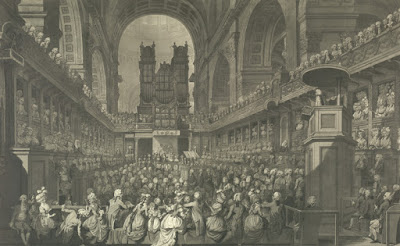Last week's
Reviews in History posted
a review by Elly Robson of William Cavert's
The Smoke of London: Energy and Environment in the Early Modern City (Cambridge UP, 2016, recently out in paperback). (For an earlier review
see here.) From the review:
Cavert is particularly strong on the complex role of political and legal institutions – both local and national – in managing coal supply and regulating smoke. In his account, the politics of coal and smoke was a politics of governance. Chapter five, ‘Nuisance and neighbours’, deals with the legal category of ‘nuisance’ to cast light on how conflict over pollution was defined and mediated. In it, Calvert investigates a smorgasbord of relatively ineffective litigious avenues for pursuing redress against industrial polluters who infringed on royal or individual property and health. Law Reports form the mainstay of the chapter and Cavert’s frustration is evident when he describes searching for nuisance cases in Westminster court archives, including 10,000 pleas in King’s Bench, as akin to ‘looking for needles in large and messy haystacks’. Yet he casts his net wide, examining an impressive array of London institutions, including the Fishmongers Company, the Court of Aldermen, and the Wardmote Courts. He consequently has an acute sense of the regulative capacity of different, interlocking jurisdictions, but does not present them as totalising in influence. Instead his emphasis falls on their limitations. Private contracts by landlords were far more effective than common law courts in excluding noxious trades from certain parts of the city, particularly in creating an elite non-industrial zone in genteel west London. This chapter tells us more about institutions and their limits than it does about the ways in which smoke sparked neighbourly negotiation. Royal and aristocratic attempts to limit air pollution in their vicinity have left a more prominent archival trace. However, further light may be cast on environmental conflict between more lowly urban neighbours through further examination of legal depositions, which tend to be well catalogued and have provided a rich lens for early modern historians examining rural disputes over resources.
A concern with governance recurs in part three, where several chapters examine the role of the state in regulating London’s coal supply and mediating the competing claims of civic governors, coal suppliers, the military, the urban poor, merchants, and industries. Efforts to ensure a constant flow of coal to the capital were more energetically pursued than attempts to alleviate pollution, because the former aligned with the priorities of the fiscal-military state: taxation, naval power, social stability, and economic development. Although there was never a state monopoly over the coal trade, the state gathered information through taxes on coal imports and intervened in markets by granting and revoking charters. Tensions could arise, however, between state revenues and economic growth, as merchants mobilised to lobby against rising coal taxes. Similarly, in times of war, able seamen transporting coal down the coast became a valued resource and were vulnerable to naval impressment, forcing the government to balance external military dangers with the threat that fuel scarcity posed to internal social order.
Read more »




Comments
Post a Comment